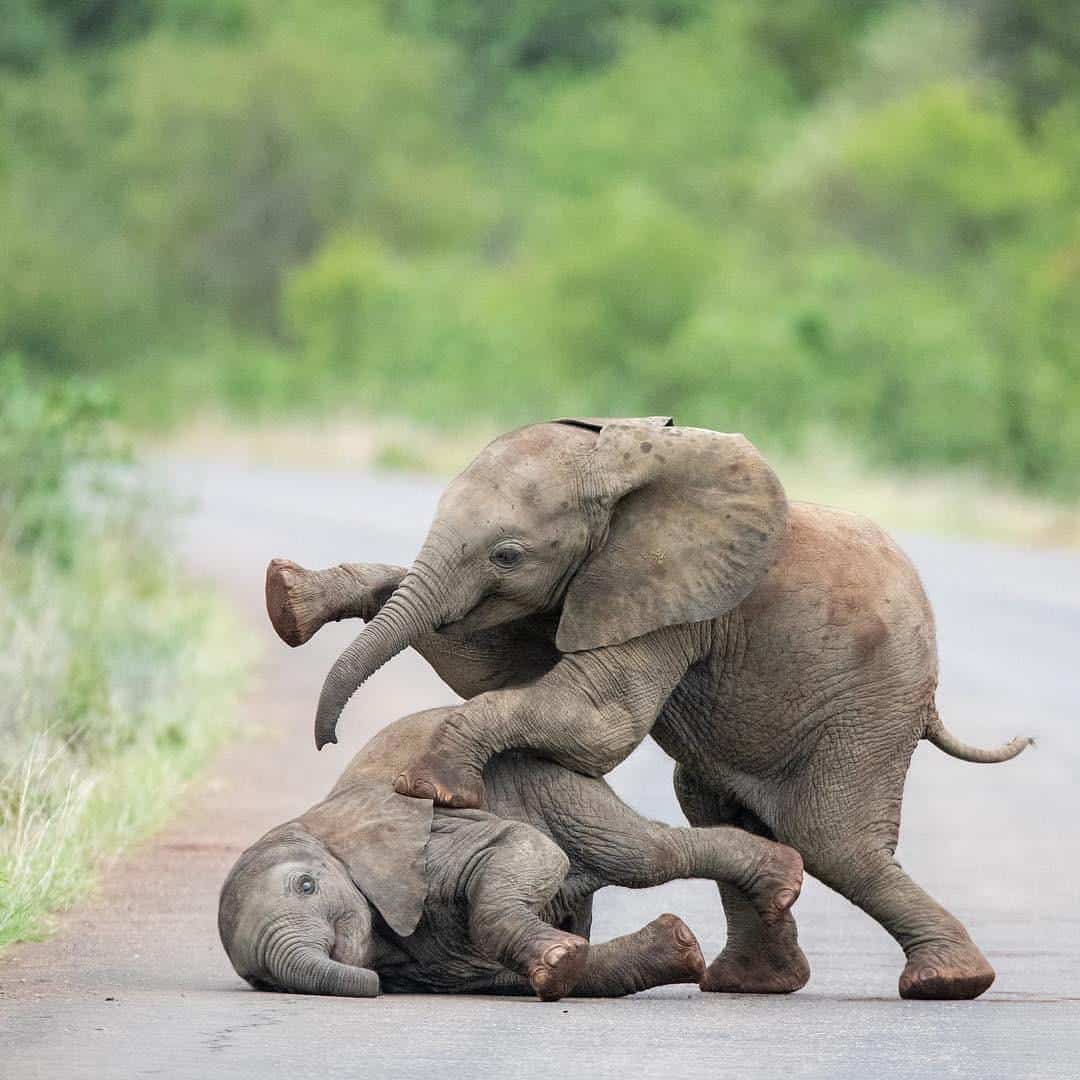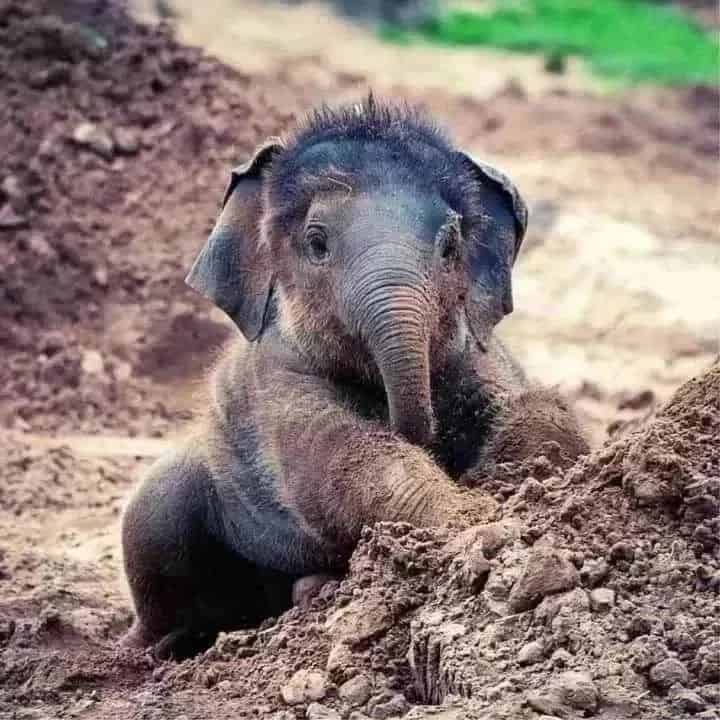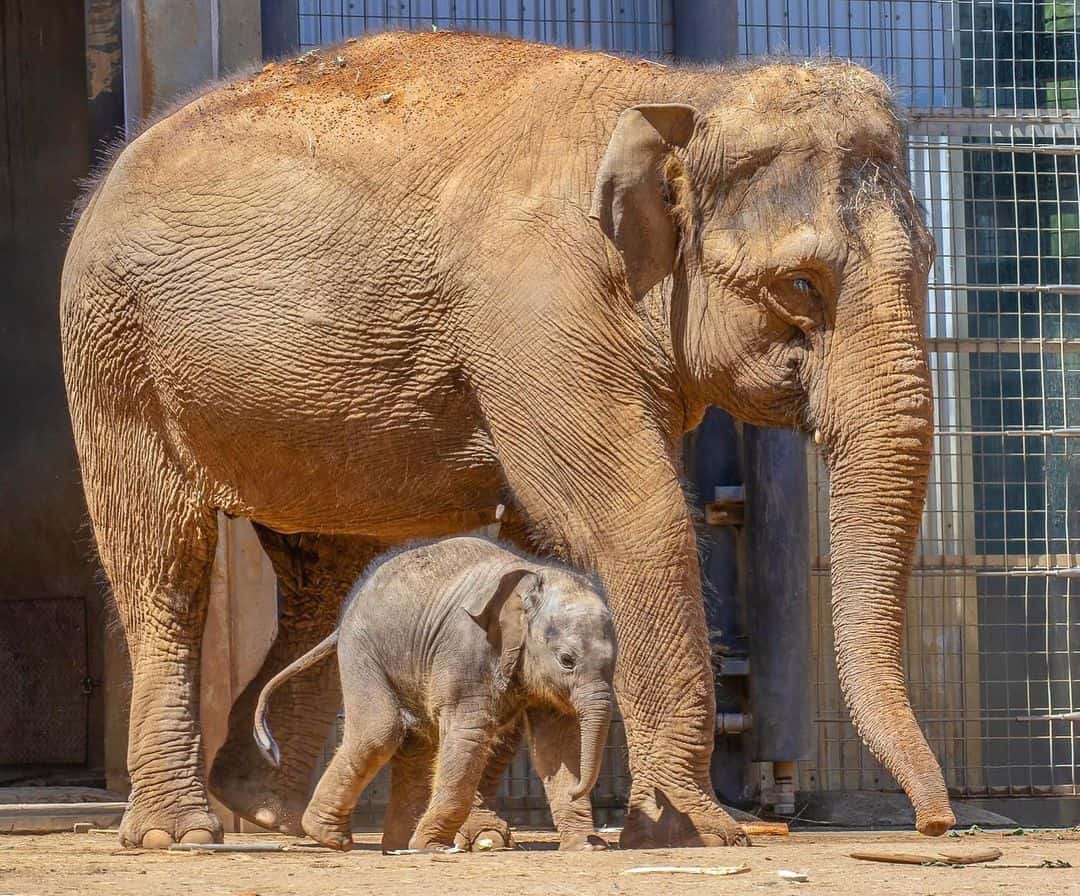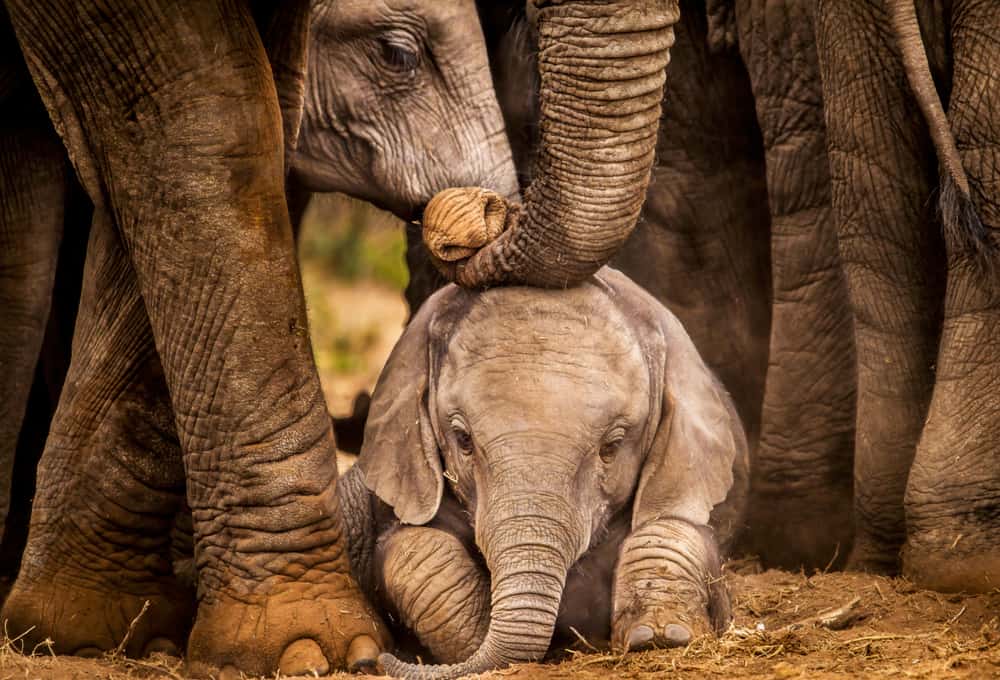Elephants are majestic animals with incredible strength and huge size. While this is true, they are also very beautiful and affectionate beings. Baby elephants are even more cute and friendly, charming millions of people across the world. A baby elephant acts just like a human baby but is born pretty big.
Elephants are intelligent animals and pass it on to their young ones immediately after birth. There are so many interesting facts to know about baby elephants, including what they are called. Read more on this article to find out more about these lovely creatures.
Baby Elephants
Baby elephants are called calves; they share the same name with cows’ infants and a few other animals. There’s no exact reason for that but what we do know is that calves are giant babies, weighing about 250 pounds at birth. Their mothers have the longest gestation period, after which they give birth to their big dependent babies.
There are numerous fascinating facts surrounding the development of elephants, from the time of their conception to their birth and growth. Here’s everything to know about baby elephants and their growth process:
1. Gestation
Female elephants are pregnant for almost two years, which is the longest time for any mammal. Their huge size may be an explanation for this, especially when their babies come really big. Baby elephants start growing gradually from the womb and this time also because of their intellectual capacity. An African elephant can be pregnant for up to 22 months, while for Asian elephants, it often ranges from 18 to 22 months.
2. Birthing
The other females in their family unit help an elephant in the birthing process. Most times, they form a circle around the elephant giving birth for protection. She gives birth while standing and the birthing process barely takes a few minutes. Elephants usually come singly, but there have been rare occasions of twins. A baby elephant comes with its head and forelegs first.
3. Infancy
Calves are huge smart babies; they come having fully developed physically and intellectually in the womb. They are about 3 ft. in height and weigh 264 lb. at birth; male African calves can weigh up to 364 lb., and Asian baby elephants, up to 200 lb. Also, calves are born nearly blind. Normally, elephants do not have great eyesight but calves barely see anything. However, they can sense their mothers by scent and touch.
Furthermore, calves are born with little curly hairs on their forehead and surrounding their body as well. And although they’re held up by their mother after birth, they can stand by themselves a few minutes after and walk within two hours of their birth. Still, they are largely dependent on their mother for the first three few of their birth, for food and support. They also drink their mother’s milk for up to ten years, which may be about 10 L daily, after they are born.

4. Development
As earlier said, Baby elephants (calves) need help with everything from their mothers. They even get with their trunks and step on them, also their weaning process is relatively long. However, the female family unit generally helps in raising a calf to give the mother some relief. As they say, it takes a village to raise a child, so aunts, sisters, and mothers play vital roles in the calf’s development. The elephant family herd/community is mostly females, headed by a Matriarch who move together.
When the calf is born, the females trumpet to announce the arrival of a new member in their herd and collectively ensure it is not left out. Calves learn basic things like what to eat and how to get it, by watching the adults. Then, they start to practice with their trunk by picking food like grasses and leaves to boost their feeding. When they are 2-10 years old, they will have completed their weaning process and start to either other vegetative food.
5. Adolescence
After they’ve weaned, calves remain with their herd. At 10 and 12 years, both male and female young elephants start to move around by themselves and play. And African elephants, at this time of age 10 and 12 years, have become sexually mature and can mate. But this happens at 14 years for Asian elephants. When maturity clocks, male elephants tend to leave their herd/ family community but the female remain. This is why the elephant family unit is dominated by females. After giving birth, females can have another calf after a year.
6. Adulthood
Elephants are the largest land animals in the world; African male elephants can reach up to 12 feet and weigh 5 tons, and females, are a little shorter by 3 ft. The Asian species are a bit smaller than the African ones, and their females do not grow tusks.
Elephants have a long lifespan of up to 70 years and keep growing throughout their time, although slower.

7. Diet
Once baby elephants are grown and have stopped weaning, they start to feed like other adults. And as we know, elephants have a really big appetite. They eat every time, almost 80% of their day, and can consume up to 149 to 169 kg of grasses and other vegetation. Their eating big is not a surprise since they have to maintain their size and growth.
They consume everything from fruits, small plants, and grasses, to twigs, roots, and tree barks. Tree barks particularly are one of their most cherished food since it contains important elements like roughage and calcium. Likewise, elephants require a substantial amount of water consumption, which can be up to 98.8 L daily. Undoubtedly, elephants eat big and eat healthily; sometimes, they dig up and eat soil to collect nutrients such as minerals and salt.
8. Social structure
As we’ve earlier established, elephants are family-oriented, as they mostly do everything with their herd or community. This herd is led by a female elephant, a matriarch, who is the oldest in the herd, followed by a group of other females. These females support and migrate together, traveling about 30 to 50 miles daily to find food and water. They also help in raising the calves until they are old enough.
Usually, the male elephants leave the herd once they attain their age of sexual maturity. So, while female elephants live all their lives together, male elephants mostly stay alone. However, they may sometimes associate with other males and get back with herds when looking to mate.
Differences Between African and Asian Elephants
We have discussed the life and growth from calves to their adult stage. However, their development may differ depending on their species. Here we’ll discuss the distinguishing factors between African and Asian elephants:
1. Size
African elephants are usually larger than their Asian counterparts. While male African elephants can grow up to 4 meters tall, Asian elephants do not grow past 3.5 meters. Also, an African elephant’s tallest point is its shoulder, while the Asian elephant’s back is its tallest point. Furthermore, Asian elephants are smaller in size than African elephants.
2. Tusks
Not all elephants have tusks, and this is mostly true for Asian elephants. Only male Asian elephants have tusks while females grow tushes which is a rudimentary tusks. It is also possible for male Asian elephants to not grow tusks. Additionally, although both male and female African elephants possess tusks, there may be some occasions where some don’t.

3. Skin Texture
The difference in skin texture between African and Asian elephants is largely due to their habitat. African elephants have softer skin than Asian elephants, and this is because of cracks in their skin meant to hold water and keep them from getting dehydrated. These cracks formed by the layer of their skin thickening and bending until the skin cracked.
4. Diet
Elephants are omnivores, but there’s a slight difference between how the African and Asian elephant feed. African elephants enjoy tree saplings and barks but Asian elephants prefer grasses and bamboo.
5. Lifespan
Elephants are one of the longest-living land mammals, but African elephants have a longer lifespan, up to 70 years while Asian elephants’ life expectancy is only 48 years.
Generally, while there are differences in their growth and life, their birth process and family commonality are the same. They also are very good contributors to the growth and maturity of calves.
Conclusion
Calves are captivating not-so-little babies and their weaning and period of infancy are very important years for their growth. They also are very dependent on their mother for food as without that they will barely survive. Female elephants are highly affectionate and stay together and support each other even after their stage of maturity
In its majesty, a female elephant can birth up to 12 calves in its lifetime. These babies are well taken care of from their birth until their age of maturity. Their long gestation and weaning years contribute to their intelligence and physical development.
